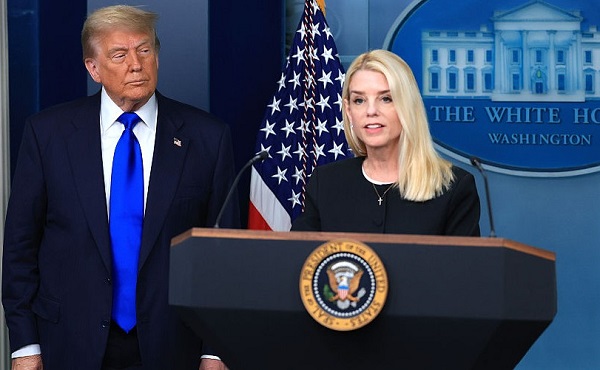Uncategorized
Trump to visit California fire scene as death toll rises

PARADISE, Calif. — President Donald Trump heads to Northern California on Saturday to see firsthand the grief and devastation from the deadliest U.S. wildfire in a century, as confusion continued over how many people remain unaccounted for.
Authorities confirmed a new death toll of 71 and say they are trying to locate 1,011 people even as they stressed that not all are believed missing.
California’s outgoing and incoming governors, both Democrats and vocal critics of Trump, planned to join the president Saturday. Gov. Jerry Brown and Gov.-elect Gavin Newsom welcomed Trump’s visit, declaring it’s time “to pull together for the people of California.”
The blaze that started Nov. 8 all but razed the town of Paradise, population 27,000, and heavily damaged the outlying communities of Magalia and Concow. It destroyed more than 9,800 homes and at its height displaced 52,000 people.
Details of Trump’s itinerary had not been released late Friday.
This patch of California, a former Gold Rush region in the Sierra Nevada foothills, is to some extent Trump country, with Trump beating Hillary Clinton in Butte County by 4 percentage points in 2016.
But Trump has stirred resentment among survivors over comments he made two days after the disaster on Twitter, then reiterated on the eve of his visit.
In an interview taped Friday and scheduled for broadcast on “Fox News Sunday,” Trump said he was surprised to see images of firefighters removing dried brush near a fire, adding, “This should have been all raked out.”
Asked if he thought climate change contributed to the fires, he said: “Maybe it contributes a little bit. The big problem we have is management.”
Those comments echoed his initial reaction to the fires Nov. 10 when he blamed the wildfires on poor forest management and threatened then to withhold federal payments. Trump subsequently approved a federal disaster declaration.
“If you insult people, then you go visit them, how do you think you’re going to be accepted? You’re not going to have a parade,” Maggie Crowder of Magalia said this week outside an informal shelter at a Walmart store in Chico.
But Stacy Lazzarino, who voted for Trump, said it would be good for the president to see the devastation up close: “I think by maybe seeing it he’s going to be like ‘Oh, my goodness,’ and it might start opening people’s eyes.”
Firefighters returning to a command
Nick Shawkey, a CalFire captain from rural Northern California, said Trump’s visit was the mark of a good leader. But to imply the state was to blame for mismanaging the forests was based on a misunderstanding because much of the forest land in California is controlled by the U.S. Forest Service, he said.
“The thing he’s tweeting about is his property,” Shawkey said.
Paul Briones, a firefighter from Bakersfield, predicted Trump’s visit would be a huge boost to the community, showing “that this on a national level is a priority.”
More than 5,500 fire personnel were battling the blaze that covered 228 square miles (590 square
Firefighters were racing against time with a red flag warning issued for Saturday night into Sunday, including winds up to 50 mph and low humidity. Rain was forecast for mid-week, which could help firefighters but also complicate the challenging search for remains.
“It’s a disheartening situation,” Butte County Sheriff Kory Honea told a news conference Friday. “As much as I wish we could get through this before the rains come, I don’t know if that’s possible.”
The number of people unaccounted for grew to more than 1,000 on Friday. But Honea acknowledged the list was “dynamic” and could easily contain duplicate names and unreliable spellings of names.
The roster probably includes some who fled the blaze and do not realize they’ve been reported missing, he said.
“We are still receiving calls. We’re still reviewing emails,” Honea said. “This is a massive undertaking. We have hundreds and hundreds of people working on this.”
Families searching for loved ones have scoured shelters and social media and say they understand the chaos of the situation, But the wait for information is agonizing.
For one family, good news arrived by telephone.
Monica Whipple said Friday she was boarding a plane back to North Carolina from Northern California when she got a call two days ago that her mother, Donna Price, had been found alive. Price had been presumed missing but was tracked down at a shelter.
“It was so crazy, I started crying in front of everybody,” Whipple said. “She’s doing OK.”
For too many others, the wait to learn a loved one’s fate has ended with bad news.
Sol Bechtold searched for his 75-year-old mother, Caddy, posting flyers of her on bulletin boards and searching for her in shelters.
On Thursday, Bechtold went to the Butte County Sheriff to provide DNA samples. As he was driving back to his home in Pleasanton, California, he got a call from an officer with the coroner’s unit of the Sonoma County Sheriff’s Office and was told his mother’s remains were found in her home in the community of Magalia. The home had burned down to its concrete foundation.
“It’s hard to realize your mother is gone,” Bechtold said.
Family members remembered her personality, her wonderful heart and great smile, he said. She raised four children.
“It’s been a pretty emotional 24 hours. Lots of tears,” he said.
___
Associated Press writers Kathleen Ronayne in Chico and Jocelyn Gecker, Janie Har and Olga Rodriguez in San Francisco contributed to this report.
Sudhin Thanawala, The Associated Press
Uncategorized
CNN’s Shock Climate Polling Data Reinforces Trump’s Energy Agenda


From the Daily Caller News Foundation
As the Trump administration and Republican-controlled Congress move aggressively to roll back the climate alarm-driven energy policies of the Biden presidency, proponents of climate change theory have ramped up their scare tactics in hopes of shifting public opinion in their favor.
But CNN’s energetic polling analyst, the irrepressible Harry Enten, says those tactics aren’t working. Indeed, Enten points out the climate alarm messaging which has permeated every nook and cranny of American society for at least 25 years now has failed to move the public opinion needle even a smidgen since 2000.
Appearing on the cable channel’s “CNN News Central” program with host John Berman Thursday, Enten cited polling data showing that just 40% of U.S. citizens are “afraid” of climate change. That is the same percentage who gave a similar answer in 2000.
Dear Readers:
As a nonprofit, we are dependent on the generosity of our readers.
Please consider making a small donation of any amount here.
Thank you!
Enten’s own report is an example of this fealty. Saying the findings “kind of boggles the mind,” Enten emphasized the fact that, despite all the media hysteria that takes place in the wake of any weather disaster or wildfire, an even lower percentage of Americans are concerned such events might impact them personally.
“In 2006, it was 38%,” Enten says of the percentage who are even “sometimes worried” about being hit by a natural disaster, and adds, “Look at where we are now in 2025. It’s 32%, 38% to 32%. The number’s actually gone down.”
In terms of all adults who worry that a major disaster might hit their own hometown, Enten notes that just 17% admit to such a concern. Even among Democrats, whose party has been the major proponent of climate alarm theory in the U.S., the percentage is a paltry 27%.
While Enten and Berman both appear to be shocked by these findings, they really aren’t surprising. Enten himself notes that climate concerns have never been a driving issue in electoral politics in his conclusion, when Berman points out, “People might think it’s an issue, but clearly not a driving issue when people go to the polls.”
“That’s exactly right,” Enten says, adding, “They may worry about in the abstract, but when it comes to their own lives, they don’t worry.”
This reality of public opinion is a major reason why President Donald Trump and his key cabinet officials have felt free to mount their aggressive push to end any remaining notion that a government-subsidized ‘energy transition’ from oil, gas, and coal to renewables and electric vehicles is happening in the U.S. It is also a big reason why congressional Republicans included language in the One Big Beautiful Bill Act to phase out subsidies for those alternative energy technologies.
It is key to understand that the administration’s reprioritization of energy and climate policies goes well beyond just rolling back the Biden policies. EPA Administrator Lee Zeldin is working on plans to revoke the 2010 endangerment finding related to greenhouse gases which served as the foundation for most of the Obama climate agenda as well.
If that plan can survive the inevitable court challenges, then Trump’s ambitions will only accelerate. Last year’s elimination of the Chevron Deference by the Supreme Court increases the chances of that happening. Ultimately, by the end of 2028, it will be almost as if the Obama and Biden presidencies never happened.
The reality here is that, with such a low percentage of voters expressing concerns about any of this, Trump and congressional Republicans will pay little or no political price for moving in this direction. Thus, unless the polls change radically, the policy direction will remain the same.
David Blackmon is an energy writer and consultant based in Texas. He spent 40 years in the oil and gas business, where he specialized in public policy and communications.
Uncategorized
Kananaskis G7 meeting the right setting for U.S. and Canada to reassert energy ties
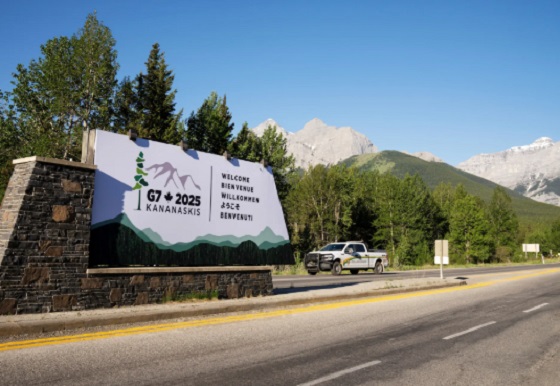

Energy security, resilience and affordability have long been protected by a continentally integrated energy sector.
The G7 summit in Kananaskis, Alberta, offers a key platform to reassert how North American energy cooperation has made the U.S. and Canada stronger, according to a joint statement from The Heritage Foundation, the foremost American conservative think tank, and MEI, a pan-Canadian research and educational policy organization.
“Energy cooperation between Canada, Mexico and the United States is vital for the Western World’s energy security,” says Diana Furchtgott-Roth, director of the Center for Energy, Climate and Environment and the Herbert and Joyce Morgan Fellow at the Heritage Foundation, and one of America’s most prominent energy experts. “Both President Trump and Prime Minister Carney share energy as a key priority for their respective administrations.
She added, “The G7 should embrace energy abundance by cooperating and committing to a rapid expansion of energy infrastructure. Members should commit to streamlined permitting, including a one-stop shop permitting and environmental review process, to unleash the capital investment necessary to make energy abundance a reality.”
North America’s energy industry is continentally integrated, benefitting from a blend of U.S. light crude oil and Mexican and Canadian heavy crude oil that keeps the continent’s refineries running smoothly.
Each day, Canada exports 2.8 million barrels of oil to the United States.
These get refined into gasoline, diesel and other higher value-added products that furnish the U.S. market with reliable and affordable energy, as well as exported to other countries, including some 780,000 barrels per day of finished products that get exported to Canada and 1.08 million barrels per day to Mexico.
A similar situation occurs with natural gas, where Canada ships 8.7 billion cubic feet of natural gas per day to the United States through a continental network of pipelines.
This gets consumed by U.S. households, as well as transformed into liquefied natural gas products, of which the United States exports 11.5 billion cubic feet per day, mostly from ports in Louisiana, Texas and Maryland.
“The abundance and complementarity of Canada and the United States’ energy resources have made both nations more prosperous and more secure in their supply,” says Daniel Dufort, president and CEO of the MEI. “Both countries stand to reduce dependence on Chinese and Russian energy by expanding their pipeline networks – the United States to the East and Canada to the West – to supply their European and Asian allies in an increasingly turbulent world.”
Under this scenario, Europe would buy more high-value light oil from the U.S., whose domestic needs would be back-stopped by lower-priced heavy oil imports from Canada, whereas Asia would consume more LNG from Canada, diminishing China and Russia’s economic and strategic leverage over it.
* * *
The MEI is an independent public policy think tank with offices in Montreal, Ottawa, and Calgary. Through its publications, media appearances, and advisory services to policymakers, the MEI stimulates public policy debate and reforms based on sound economics and entrepreneurship.
As the nation’s largest, most broadly supported conservative research and educational institution, The Heritage Foundation has been leading the American conservative movement since our founding in 1973. The Heritage Foundation reaches more than 10 million members, advocates, and concerned Americans every day with information on critical issues facing America.
-
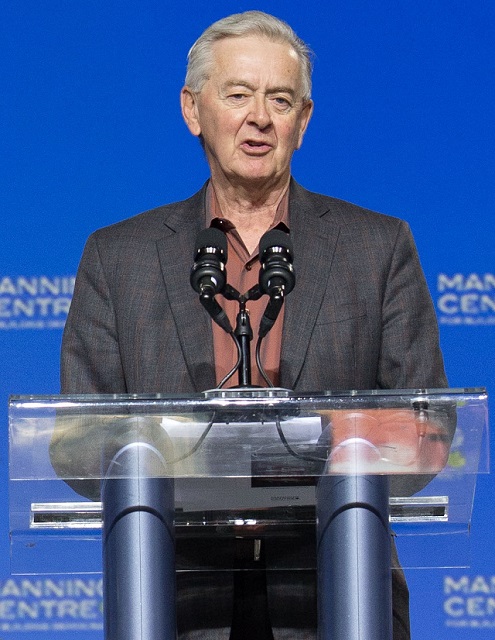
 Opinion1 day ago
Opinion1 day agoPreston Manning: Three Wise Men from the East, Again
-

 Addictions1 day ago
Addictions1 day agoWhy B.C.’s new witnessed dosing guidelines are built to fail
-

 Uncategorized2 days ago
Uncategorized2 days agoCNN’s Shock Climate Polling Data Reinforces Trump’s Energy Agenda
-

 Business1 day ago
Business1 day agoCarney Liberals quietly award Pfizer, Moderna nearly $400 million for new COVID shot contracts
-
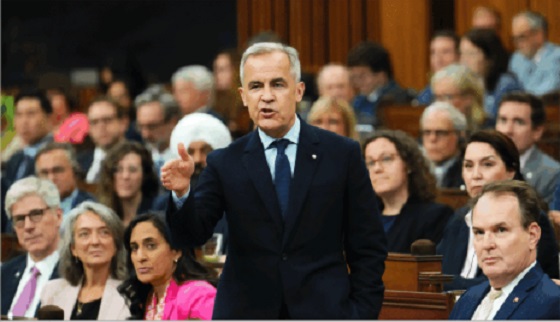
 Business1 day ago
Business1 day agoMark Carney’s Fiscal Fantasy Will Bankrupt Canada
-
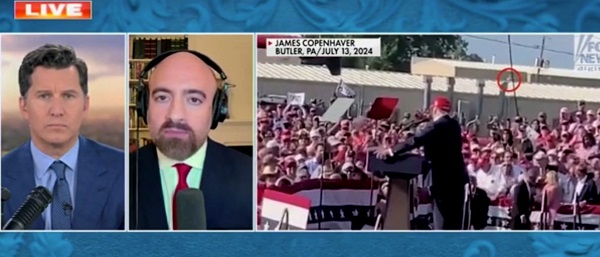
 Daily Caller20 hours ago
Daily Caller20 hours ago‘Strange Confluence Of Variables’: Mike Benz Wants Transparency Task Force To Investigate What Happened in Butler, PA
-

 Alberta14 hours ago
Alberta14 hours agoAlberta ban on men in women’s sports doesn’t apply to athletes from other provinces
-
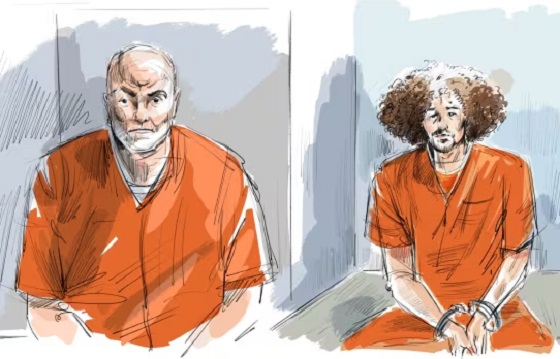
 National13 hours ago
National13 hours agoCanada’s immigration office admits it failed to check suspected terrorists’ background






